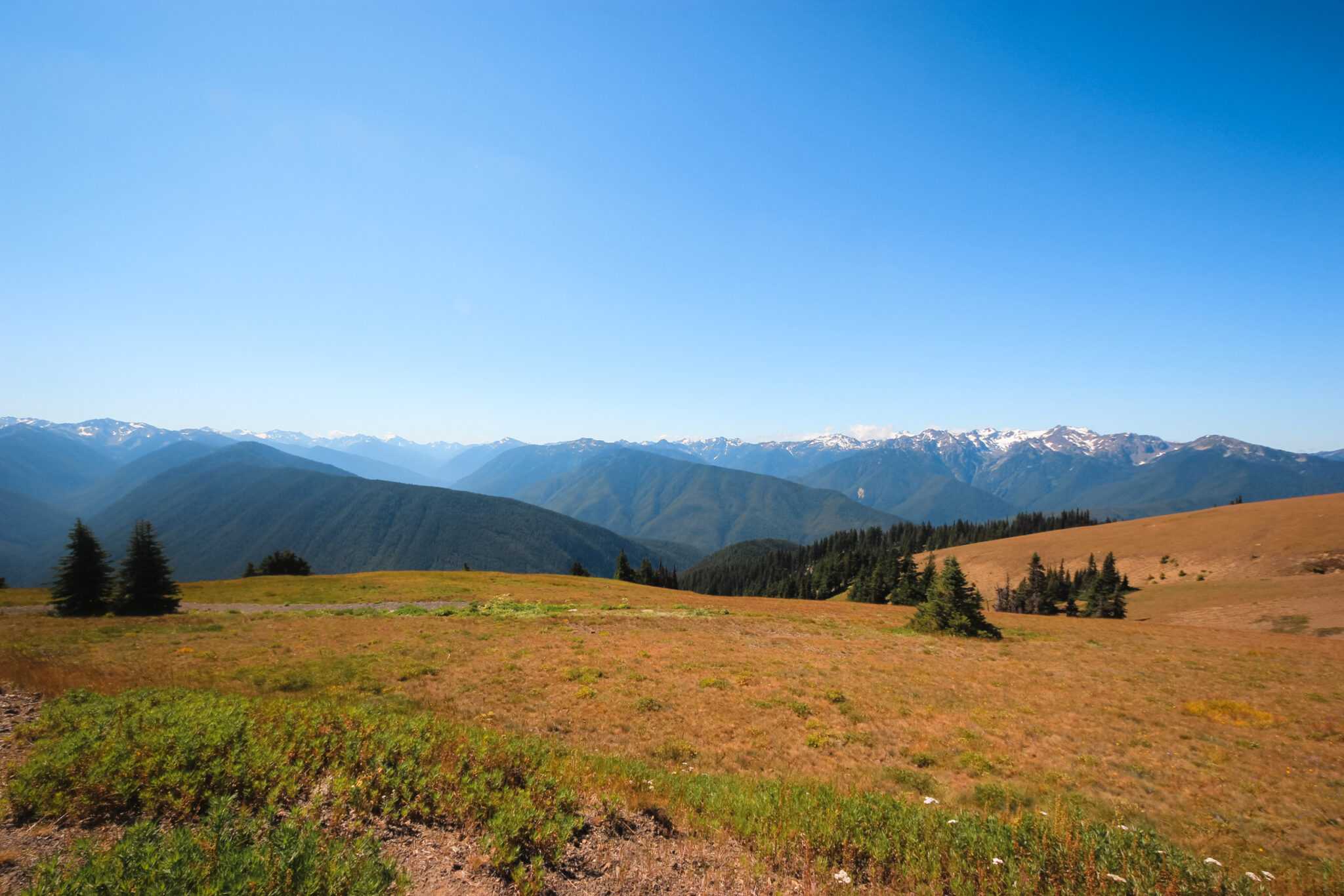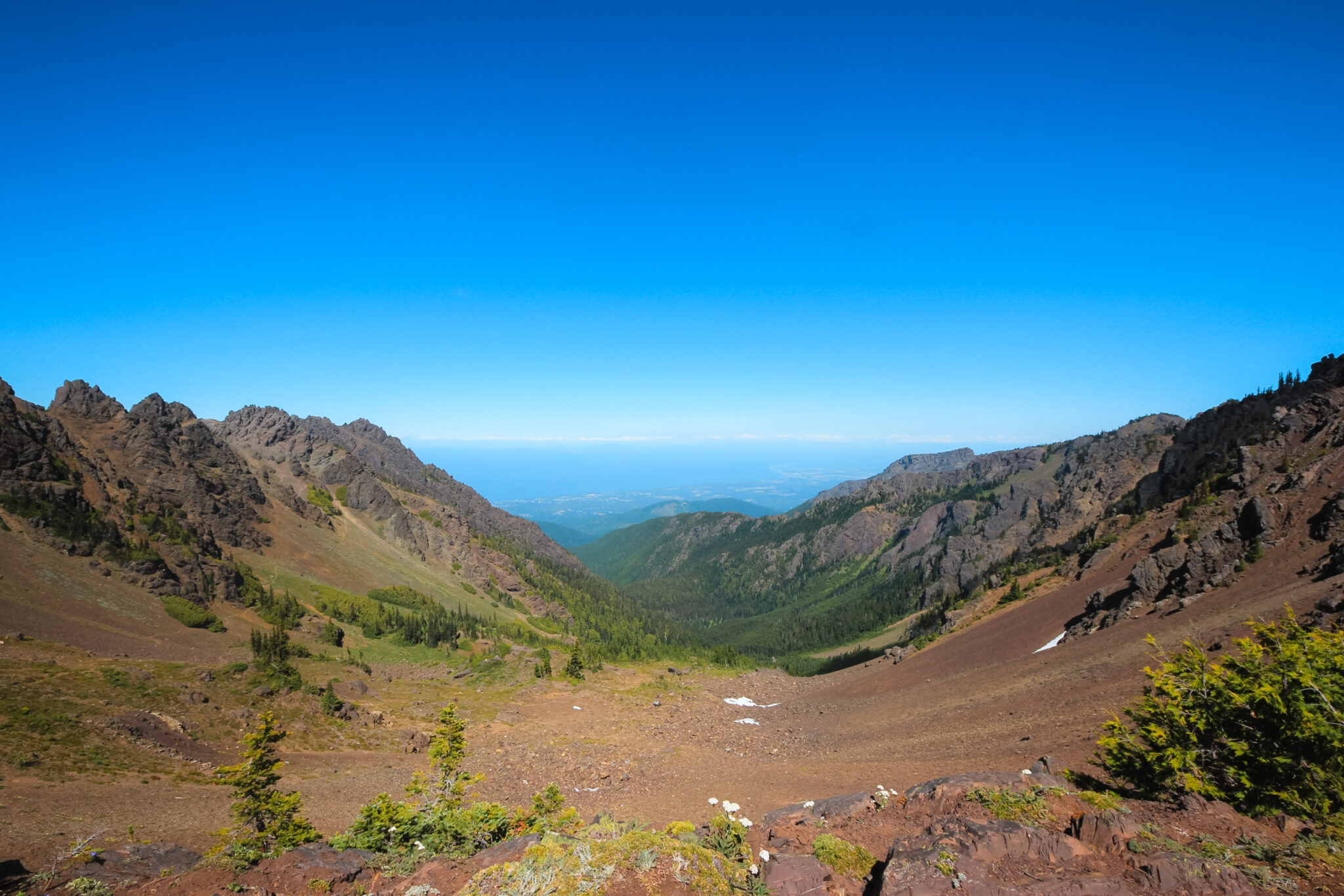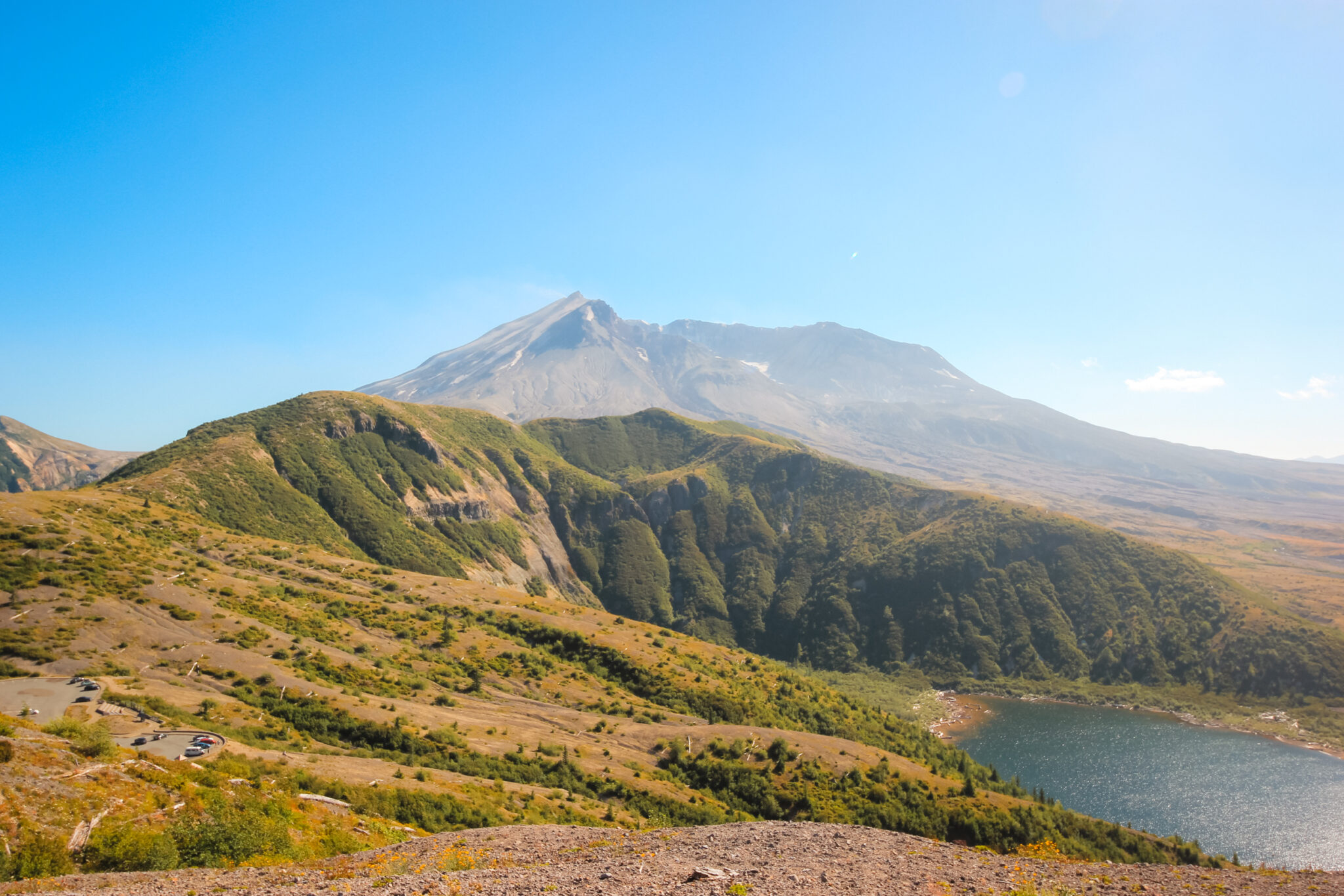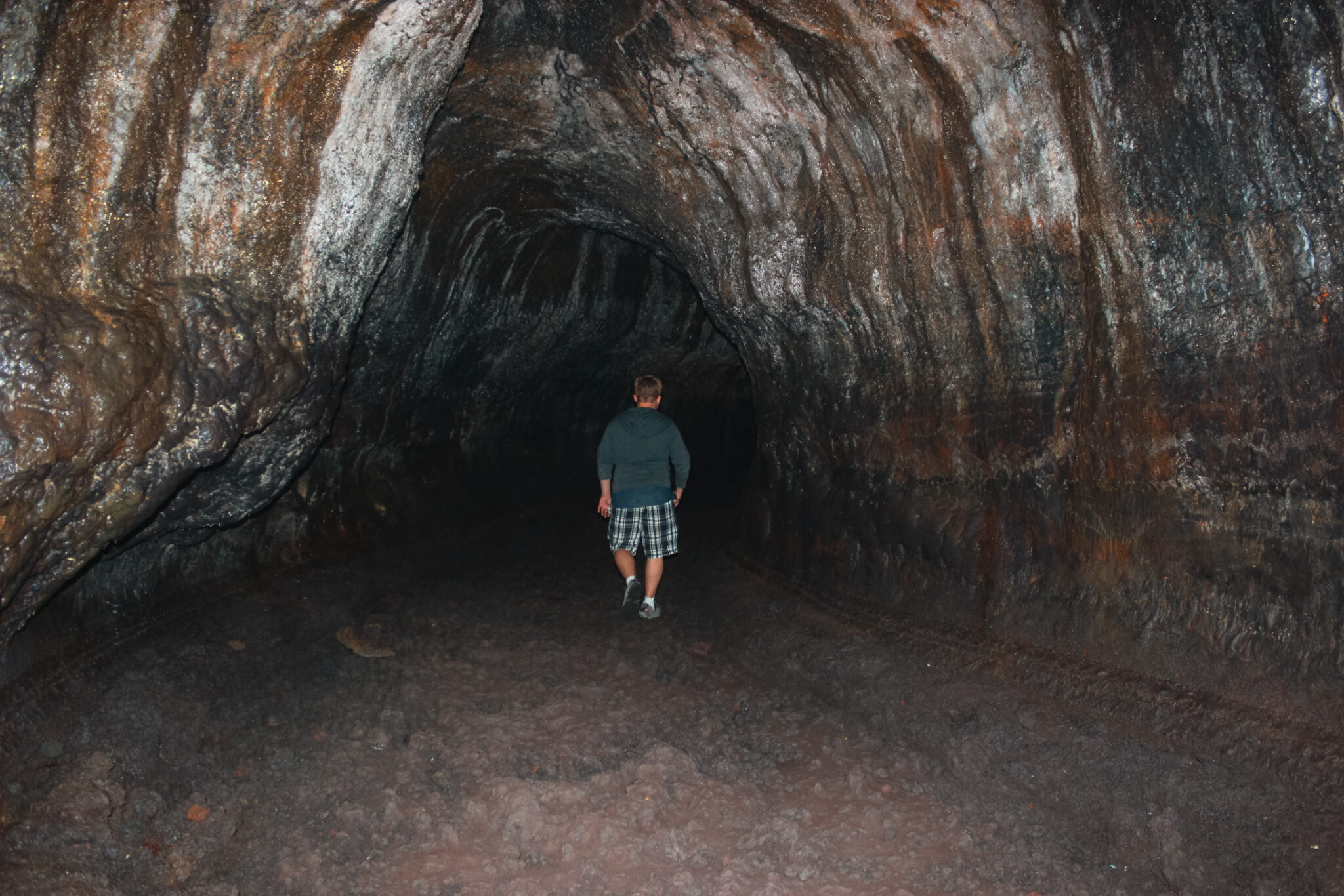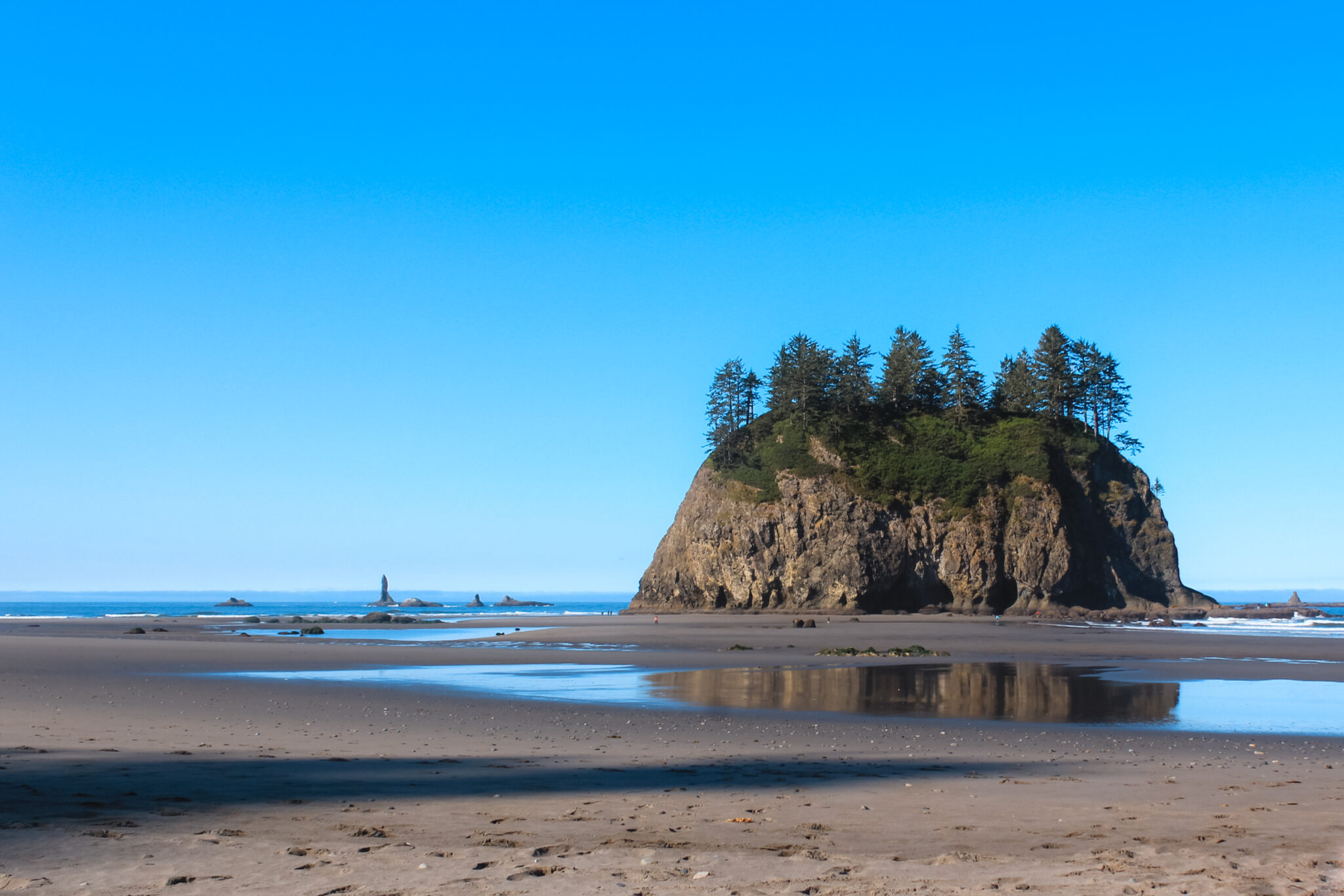Trail Guide: Lava Canyon Hike at Mt St Helens, Washington
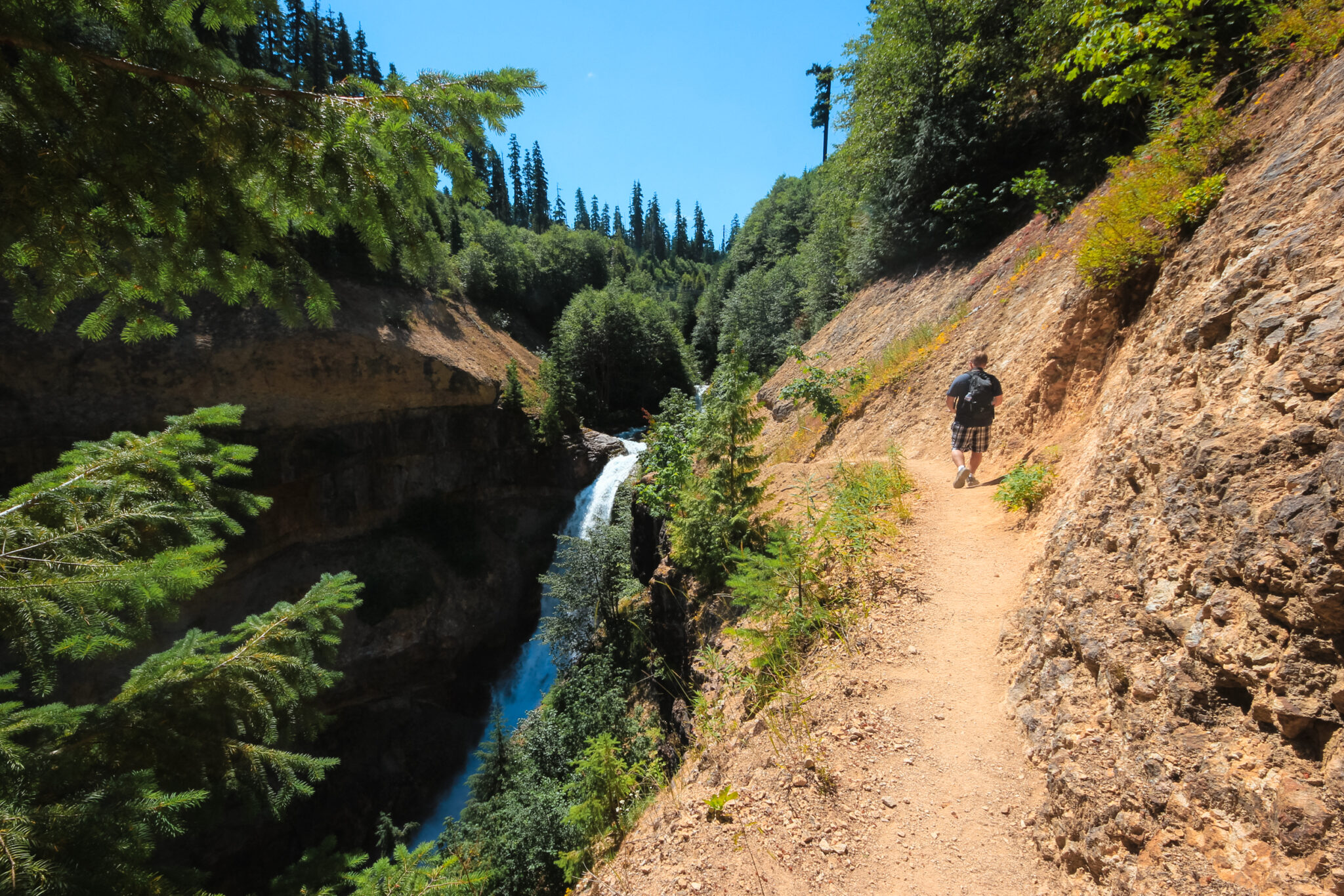
Lava Canyon is wild and not in a cute, forest-stroll kind of way. It’s all cliffs, waterfalls, and lots and lots of lava rock. I hiked it a few years ago when the suspension bridge was still open and I’ve been low-key obsessed with it ever since.
The trail starts off deceptively chill with a paved, family-friendly path. But give it a bit and suddenly you’re edging along narrow drop-offs, scaling a 30-foot metal ladder, and thinking, “Wait… this is still the same hike?”
Even though the bridge is closed now, the trail is still one of the most exciting day hikes in the Mount St. Helens area. Whether you’re in it for the geology, the waterfalls, or the thrill of dangling over a canyon (responsibly), Lava Canyon’s got it all.
In this guide, I’m breaking down what each section is actually like, how far to go based on your comfort level, what to pack, and why you might want to leave your pup at home for this one.
⚠️ Heads up: The famous Lava Canyon Suspension Bridge is currently closed, so the full loop isn’t possible. You can still hike on both sides of the river, but you’ll need to double back instead of making a loop.
Quick Trail Stats for Lava Canyon
Whether you’re looking for a quick scenic walk or you’re ready to scramble down ladders and narrow ledges, Lava Canyon has it all. The trail gets harder as you go, but no matter where you stop, you’ll see some incredible views.
Here’s a quick look at what to expect:
- Location: Mount St. Helens, Washington
- Distance: Up to 5.4 miles (8.7 km) roundtrip (see map)
- Elevation Gain: Around 1,168 feet (356 m)
- Trail Type: Out-and-back (the full loop isn’t possible right now)
- Difficulty: Easy to difficult, depending on how far you go
- Family Friendly: Yes, on the paved section
- Dog Friendly: Leash required, but the cliffs and ladder make it risky
- Season: Best from late May to October (the road is closed in winter)
- Pass Required: Northwest Forest Pass or $5 day-use fee
- Toilets: Vault toilets at the trailhead
- Water: No drinking water available, bring your own
- Suspension Bridge:Closed as of 2025
The Explosive History of Lava Canyon
Lava Canyon looks wild now, but it used to be completely hidden! For centuries, the whole area was buried under layers of rock, mud, and debris until Mount St. Helens blew it wide open.
Here’s the quick version:
Thousands of years ago, the Muddy River carved a deep canyon into ancient lava flows. Then, around 2,500 years ago, Mount St. Helens erupted and filled the gorge with fresh lava which hardened into smooth, sculpted rock. Layer by layer, ash and sediment buried it all over time.
Fast forward to 1980. When Mount St. Helens erupted again, a massive mudslide tore through the south side of the mountain. It ripped away all that debris and exposed the canyon below, revealing waterfalls, cliffs, and rock formations that hadn’t seen daylight in over a thousand years.
Today, you can hike right into that exposed landscape. The waterfalls, the lava walls, the dramatic drop-offs are all a direct result of that eruption. It’s one of the coolest places to literally walk through geologic history!
A Legendary Love Story in the Mountains
The land around Mount St. Helens has been home to Indigenous peoples for time immemorial. According to Klickitat legend, the mountains we now call Hood, Adams, and St. Helens were once powerful beings caught in a dramatic love triangle.
Wy’east (Mount Hood) and Pahto (Mount Adams) were two brothers who fell in love with the same woman, Loowit (Mount St. Helens). Their fight over her was so fierce that it shook the earth, split the land, created the Columbia River Gorge, and forever changed the landscape.
In the end, Loowit was turned to stone and became the beautiful but volatile Mount St. Helens. The story lives on in the eruptions, the rugged terrain, and the deep connection between the mountains and the people who’ve lived alongside them.
What to Expect on the Lava Canyon Trail
Lava Canyon isn’t your average forest stroll. The trail is split into three main sections, each one more challenging than the last. You can stop whenever you feel like you’ve hit your limit and still get amazing views either way.
When I hiked it a few years ago, I had no idea what I was getting into. I started on the easy paved path thinking it would be a casual sightseeing walk and suddenly I was climbing down a ladder and walking along the edge of a cliff!
General Flow of the Trail
- The first section is paved, easy, and perfect for families, strollers, or anyone wanting a chill walk with a waterfall payoff.
- The second section kicks things up a notch with steeper descents, rocky footing, and (normally) the famous Lava Canyon Suspension Bridge, though it’s currently closed, so no full loop for now.
- The third section is full-on adventure mode. It’s narrow, exposed, and includes a 30-foot vertical ladder and cables bolted into the canyon wall. It’s not for everyone, but the views are incredible if you’re up for it.
This trail has lots of options. You can keep it mellow or push into more intense terrain depending on your comfort level. But whatever you do, wear proper shoes, pack water, and keep an eye on the trail. Some sections get slick, especially near the waterfalls.
Section 1: Easy & Accessible for Everyone
The first stretch of Lava Canyon Trail is smooth sailing. It’s fully paved, well-maintained, and great for families, strollers, and anyone who just wants to soak up some volcanic scenery without doing anything too wild.
From the trailhead, you’ll follow a series of gentle switchbacks through a lightly forested slope. Along the way, interpretive signs share info about the area’s geology and how the 1980 eruption reshaped the land. You’ll drop about 100 feet in elevation over half a mile, but it’s a very gradual descent.
Eventually, you’ll reach a sturdy boardwalk and a wooden viewing platform overlooking the Muddy River. It’s a lovely spot to stop for photos or just watch the water rush below.
At the end of the paved trail, you’ll reach a cluster of signs that mark the end of the accessible portion. From here, things get steeper and rougher, so it’s a good turnaround point if you’re hiking with little ones, mobility concerns, or just want to keep things low-key.
? Tip: Even if you only do this short section, it’s still worth the drive. You’ll get a glimpse of the canyon, learn about the eruption, and enjoy a peaceful walk with hardly any effort.
Section 2: Moderate & the (Closed) Lava Canyon Suspension Bridge
If you’re up for more than just a paved stroll, the second section of the trail is where Lava Canyon really starts to shine. It’s steeper, rockier, and way more exciting, but still doable for most casual hikers as long as you take your time and watch your footing.
After the paved path ends, you’ll reach a split. To the right, you can cross a steel bridge to explore the east side of the canyon. This route has great views of the Muddy River tumbling over the rocks and lets you get a little closer to the waterfalls.
Or you can continue straight on the main trail toward where the suspension bridge used to mark the start of the loop.
What’s the Deal with the Suspension Bridge?
The Lava Canyon Suspension Bridge is currently closed due to safety concerns and it’s been this way for a while. That means you can’t do the full loop across the canyon, you’ll need to hike in and backtrack the same way.
You can still walk down both sides of the river and view the bridge from a distance, but there’s no crossing it. Even without the bridge, this part of the trail is still a highlight.
You’ll descend deeper into the canyon, pass really cool rock formations, and catch glimpses of waterfalls thundering through the gorge. The trail hugs the canyon wall in places, and the drop-offs can be intense, so if you’re nervous with heights, this might be a good place to turn back.
The footing can get slippery here, especially near wet rocks and shaded sections. Trekking poles are a good idea and you’ll want grippy shoes with good support. Take your time and stay on the trail, there are warning signs for a reason and this section has seen accidents over the years.
Tip: The steel bridge near the beginning is still open and offers one of the best views of the upper falls. Even if you stop here and skip the tougher parts, it’s still a win.
Section 3: Difficult & the 30-Foot Ladder
So, you’ve made it past the paved trail, navigated the rocky descent, and want more? Welcome to the most challenging part of the Lava Canyon hike!
This final stretch isn’t long, but it packs a punch with narrow ledges, exposed cliffs, and one seriously steep ladder. It’s not for the faint of heart, but the payoff is worth it.
⚠️ A note on safety: This section isn’t recommended for young kids, people with a fear of heights, or dogs that can’t be carried down a ladder or stay away from edges. If you’re unsure, it’s totally okay to turn around earlier, there’s plenty of beauty to enjoy without going all the way.
Narrow Trails, Big Views, and Steep Drops
The third section picks up after the suspension bridge (or, rather, the viewpoint near it, since it’s currently closed).
From here, the trail winds along the edge of the canyon and quickly gets steeper and more rugged. It’s a slow-and-steady kind of hike, expect loose rocks, sharp switchbacks, and dramatic drop-offs just a few feet from the trail.
You’ll descend about 1,300 feet over the next few miles with some of the most jaw-dropping scenery of the entire trail. The canyon walls feel huge here and you’ll get panoramic views of the waterfalls running through the volcanic rock.
This section is much quieter than the rest of the trail, so it feels more remote. You’ll pass through shady pockets of forest, duck under lava formations, and, if you’re lucky, have a few moments of total silence except for the sound of the river below.
The Infamous 30-Foot Ladder
Eventually, you’ll reach the metal ladder. It’s about 30 feet tall and hugs a vertical rock face. It’s solid and well-maintained, but the rungs are narrow and there’s no room for hesitation. You’ll need both hands free, so stash your trekking poles and make sure your pack’s snug.
Once you’re down the ladder, the trail leads into a beautiful forested gully with mossy rocks, delicate trees, and a bit of a fairytale vibe. It’s a peaceful contrast to the exposed cliffs just above.
End of the Trail: Smith Creek Bridge
The trail wraps up at a small bridge that crosses the Muddy River as it flows out of the canyon and onto the open plains. It’s the turnaround point for most hikers and the perfect spot to take a breather, grab a snack, and soak in the views before retracing your steps back up.
When to Hike Lava Canyon
The best time to hike Lava Canyon is late May through October.
The trail sits at a higher elevation, so snow sticks around longer than you might expect and the road to the trailhead (NF-83) is closed in winter past Marble Mountain Sno-Park.
If you’re visiting outside of the summer season, there’s a good chance you won’t be able to drive all the way in.
Summer = Full Access (and More People)
If you want full access to the trail, aim for June through early October. That’s when the snow has melted, the waterfalls are raging, and the canyon is fully open (aside from the closed suspension bridge, of course).
Just know that this is also the most popular time to visit, so don’t expect total solitude, especially on weekends.
? Tip: If you’re going during peak season, try to arrive early in the morning or later in the afternoon for fewer crowds and cooler temps.
Fall Colours & Fewer People
September and early October are especially lovely if you like cooler weather and colourful foliage.
The canyon walls light up with golden leaves and the trail tends to be quieter. Just check road conditions before you go, early snow sometimes shows up in higher elevations by mid-fall.
Spring & Winter = No-Go
From late fall through spring, the access road isn’t plowed and is intentionally left covered for winter recreation. That means you’ll need a snowmobile or similar winter gear to even get close and hiking the trail itself wouldn’t be safe in icy or snowy conditions.
What to Pack for Lava Canyon
Lava Canyon might be a choose-your-own-adventure kind of trail, but no matter how far you go, the right gear makes all the difference.
Here’s what we recommend bringing, whether you’re sticking to the paved path or tackling the exposed cliffs and ladder section.
Essentials for Every Section
- Water: Bring more than you think you’ll need, especially in the summer. There’s no drinking water at the trailhead or along the trail. A hydration pack is great, but I also like carrying a water bottle with electrolytes for an extra boost.
- Good shoes: Hiking boots or trail runners with solid grip are a must if you plan to go beyond the paved part. The rocks can get slick and the steep sections require sturdy footing.
- Bug spray: The mosquitoes here don’t mess around, especially in late spring and summer. I love Primally Pure’s bug spray, it’s natural, smells good, and actually works.
- Sun protection: There’s not much shade once you leave the trees. A wide-brimmed hat, sunglasses, and sunscreen will go a long way.
For the Adventurous Sections
- Trekking poles: Super helpful for the steeper parts, especially if you’re going past the bridge or tackling the ladder section. They’ll save your knees on the way back up.
- Daypack with snacks: If you’re hiking past the paved section, pack some snacks or a light lunch. You’ll want the energy for those ups and downs.
- Hands-free storage: A small backpack or hip pack is perfect. You’ll need both hands free on the ladder and exposed sections.
- Optional but helpful: A bear bell and spray (just in case), a basic first aid kit, and the 10 essentials if you’re planning to do the full out-and-back route.
Tip: There’s no cell service in the area, so download your trail map ahead of time and let someone know where you’re going.
More to Explore Near Lava Canyon
If you’re heading out to Lava Canyon, why not turn it into a full-on adventure day? This part of Gifford Pinchot National Forest is packed with epic views, cool geology, and lesser-known trails.
Here are a few other cool spots to check out nearby:
- Ape Cave Lava Tubes – Explore one of the longest lava tubes in North America! It’s chilly, pitch black, and super cool (literally). Bring a strong flashlight, you’re gonna need it.
- Windy Ridge Viewpoint – For panoramic views of Mount St. Helens, Spirit Lake, and the 1980 blast zone, this one’s hard to beat (it’s actually my favourite). It’s a bit of a drive but worth every kilometre.
- Trail of Two Forests – A short boardwalk trail with tree molds left behind by ancient lava flows. Quick, easy, and fun for all ages.
- June Lake Trail – This mellow 2.6-mile trail leads to a beautiful alpine lake with a small waterfall. It’s a great spot for a snack break or even a chilly swim if you’re brave.
Lava Canyon FAQ
Nope, it’s currently closed (and has been for a while). You can still hike to either side and see it from a distance, but you can’t cross it. That means the full loop isn’t possible, you’ll need to do an out-and-back instead.
Yes! The first half-mile is paved and stroller-friendly, so it’s great for families. But beyond that, the trail gets steep, rocky, and exposed. If you’re hiking with little ones, it’s best to turn around before things get intense.
It can be. Sections of the trail are narrow with drop-offs and no railing, and there’s a 30-foot metal ladder on the final leg. If heights make you nervous, I’d recommend sticking to the paved section or turning back before the ladder.
Yes, but they must be on a leash, but honestly, I wouldn’t recommend bringing them past the paved part. The terrain gets sketchy, and there’s no safe way to get a dog down the ladder. Smaller dogs could be carried, but it’s still risky.
Late May through early October is the sweet spot. The access road is closed in winter and snow can linger into late spring. Fall is quieter and colourful, while summer gives you full waterfall views.
Yep! You’ll need a Northwest Forest Pass or a $5 day-use fee. There’s a self-serve pay station at the trailhead, but it’s a good idea to bring cash just in case.
No to both. Bring plenty of water, and don’t count on a signal. Download your maps and let someone know your plans before heading out.
It depends on how far you go! If you’re just doing the paved section, you can be in and out in 30–45 minutes. If you hike the full out-and-back past the ladder and down to the final bridge, expect 2.5 to 4 hours, depending on your pace and how often you stop for photos.
Final Thoughts on Hiking Lava Canyon
I hiked Lava Canyon a few years ago, back when the suspension bridge was still open and I’ve been dreaming about going back ever since. That crossing was both terrifying and incredible, and the whole trail felt like an awesome adventure from start to finish.
Even now, with the bridge closed, Lava Canyon is still such a wild and beautiful place to explore. The waterfalls, the volcanic rock, the canyon walls, it’s all just so dramatic.
You don’t have to hike the whole thing to get a taste of it either. Just go as far as you’re comfortable, bring the right gear, and take your time.
I’ve only done this trail once, but I’d love to visit again, especially in the fall when the canyon’s full of colour! It’s defintely a hike that sticks with you long after you’ve left.
